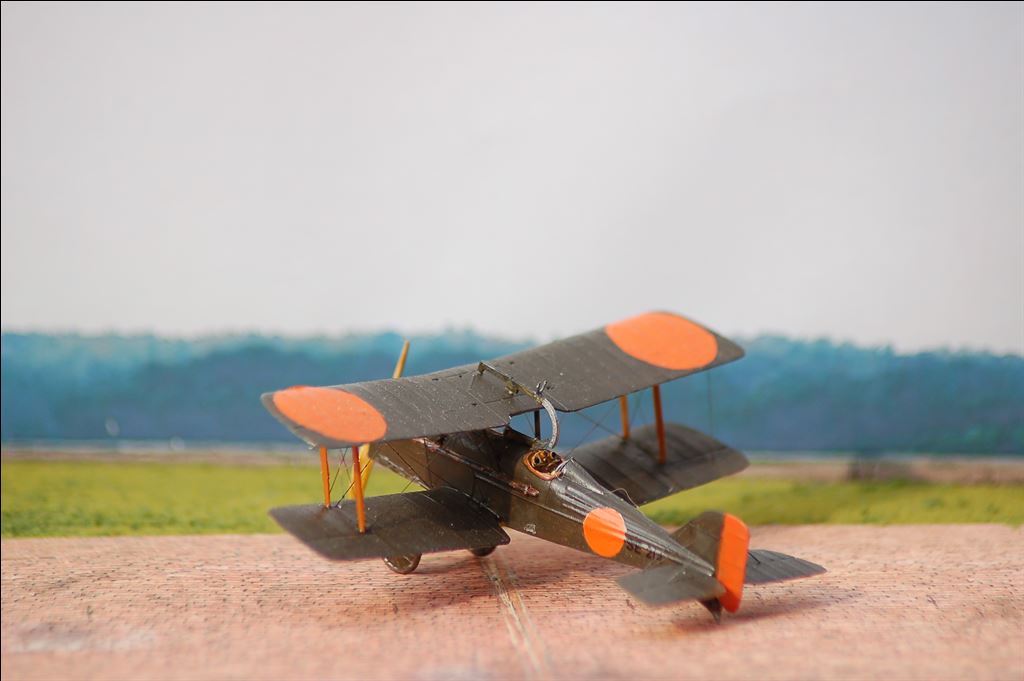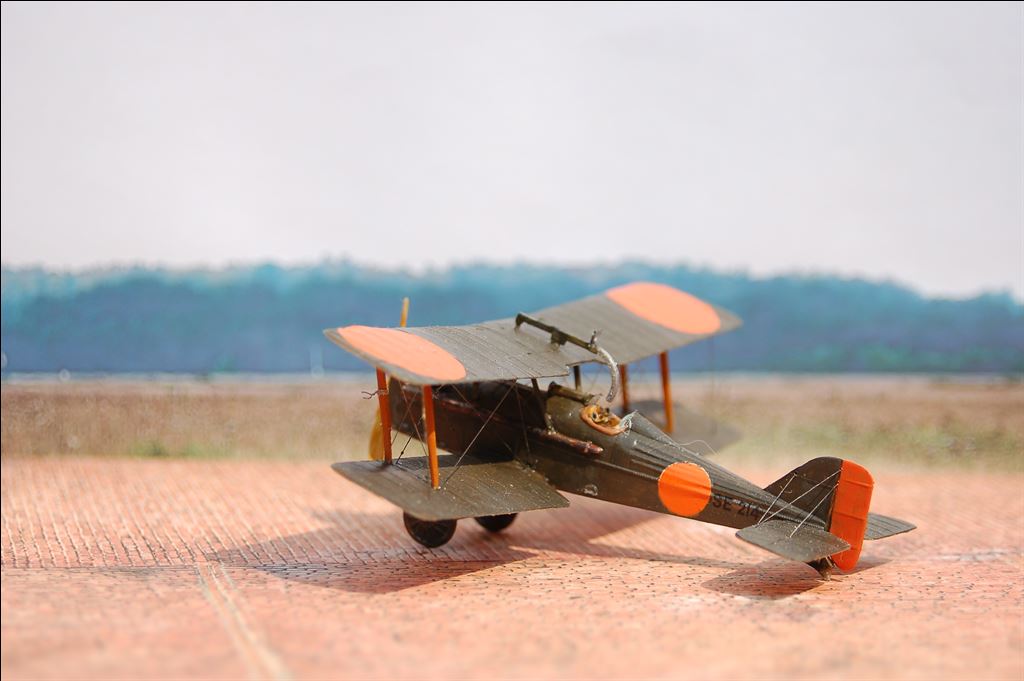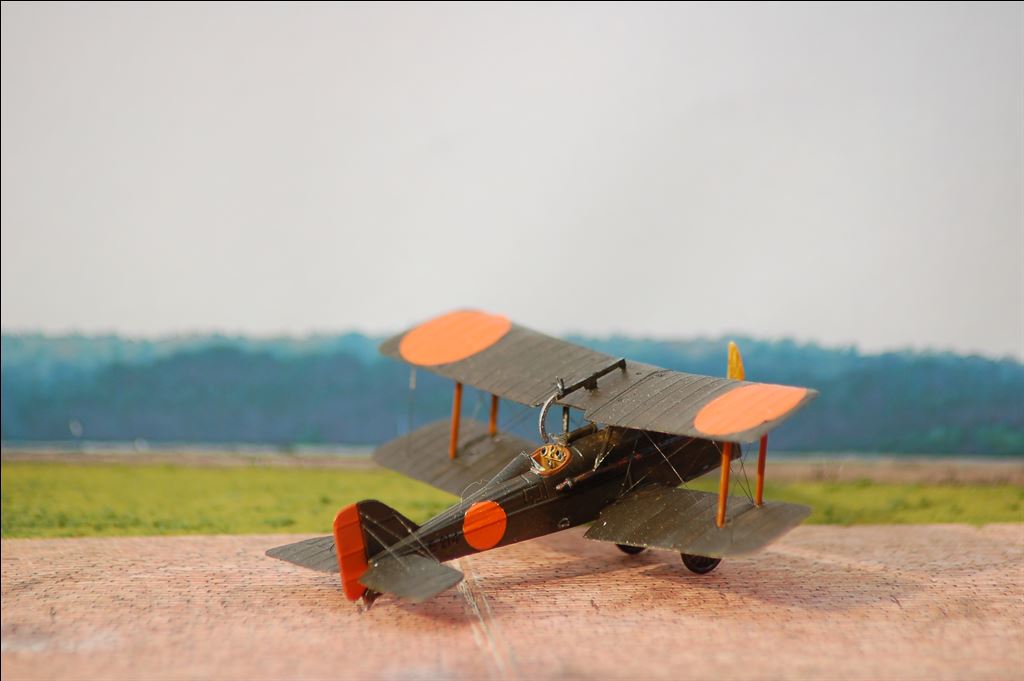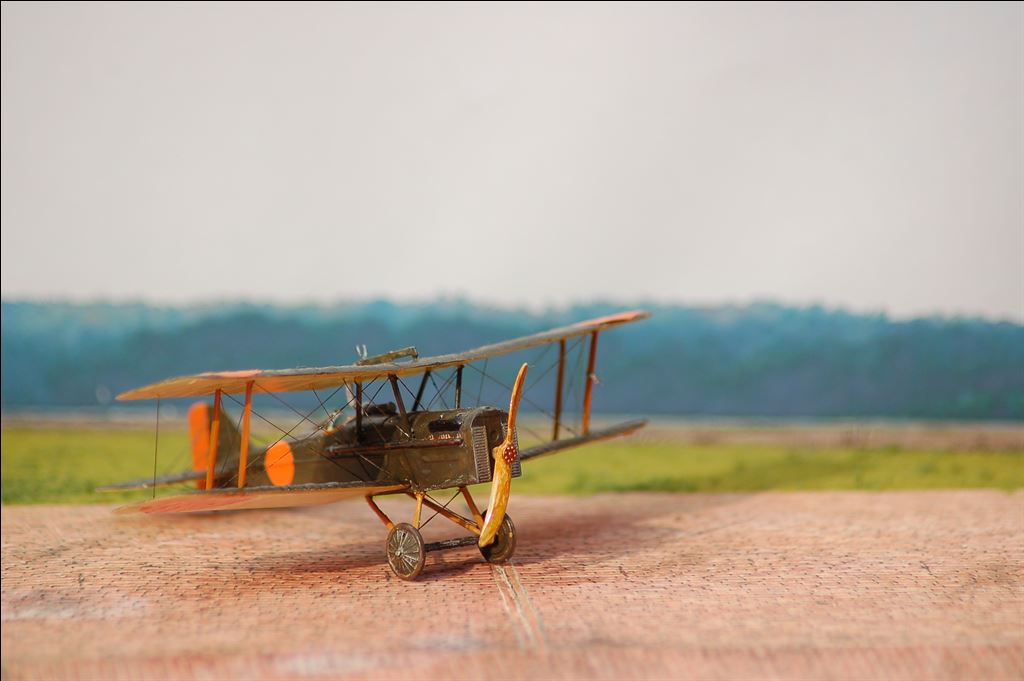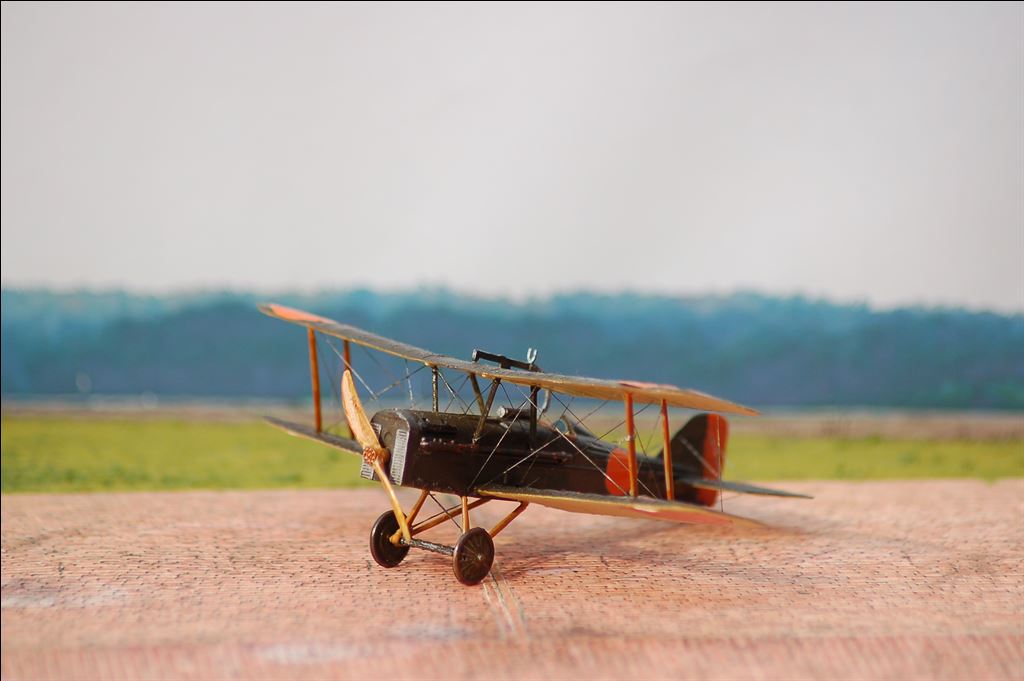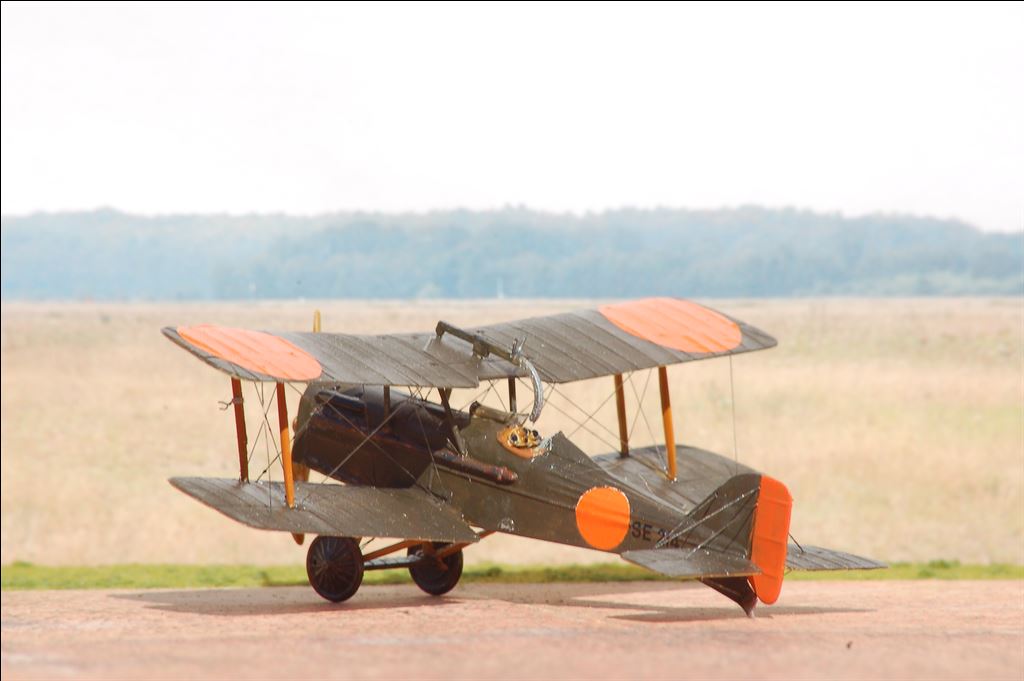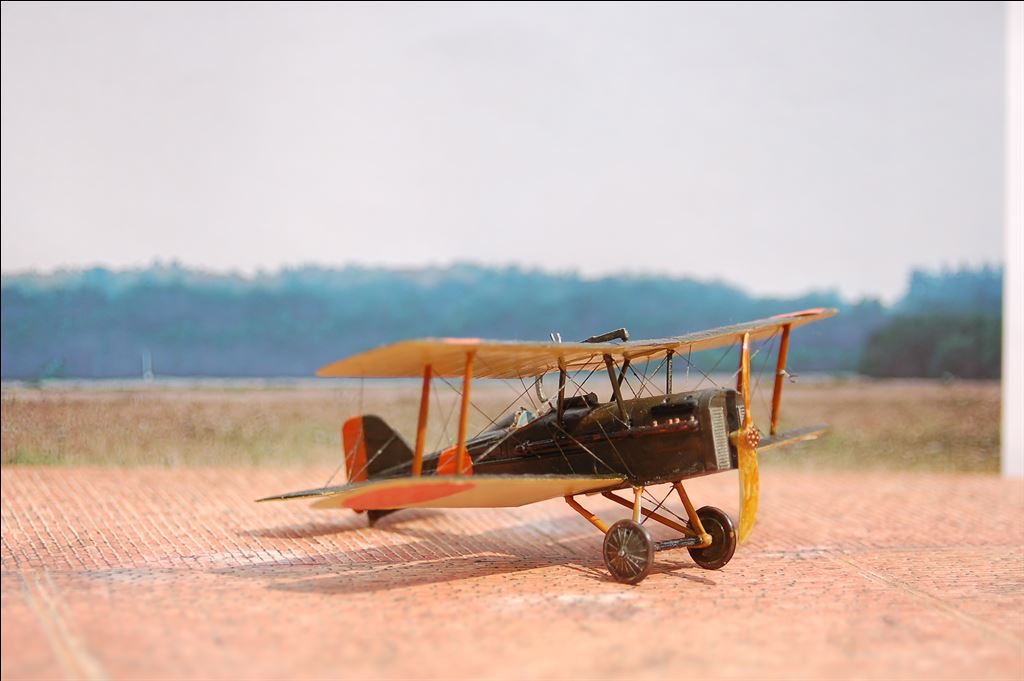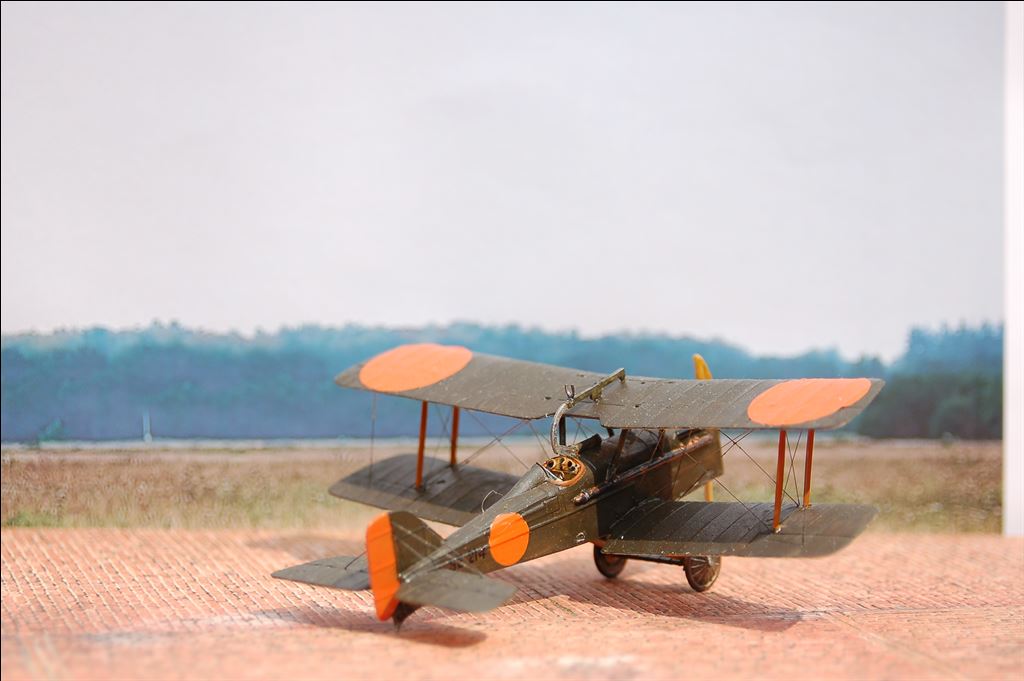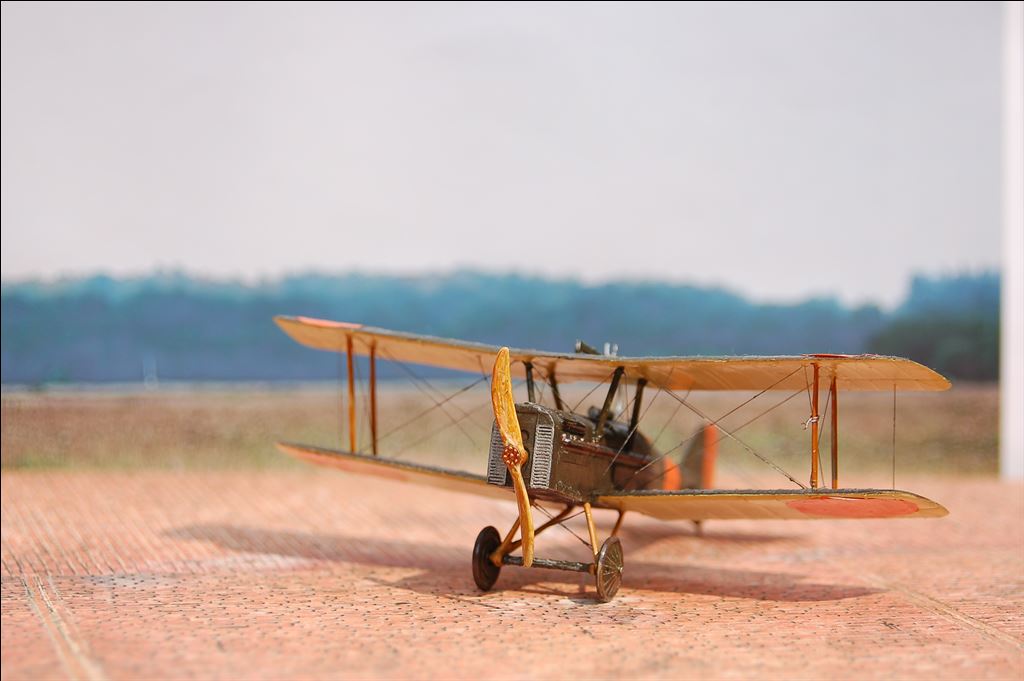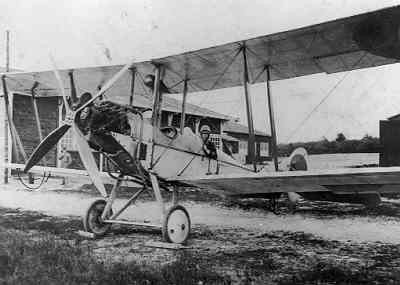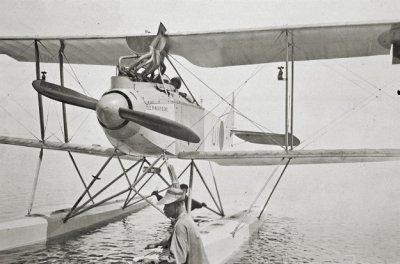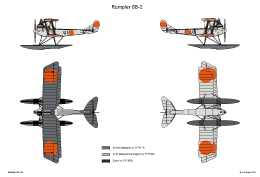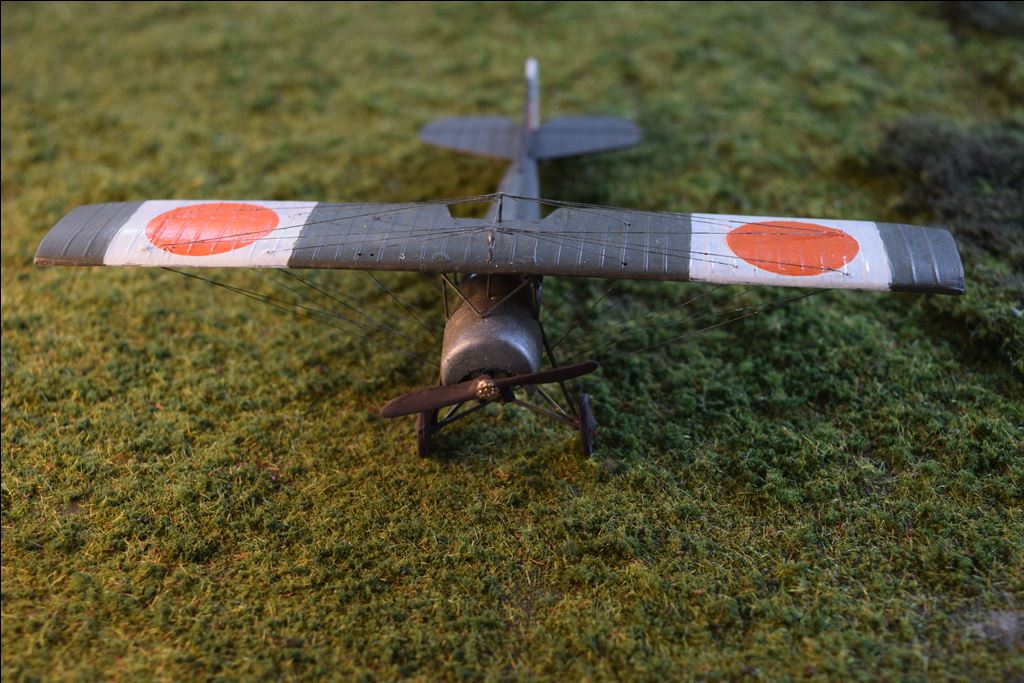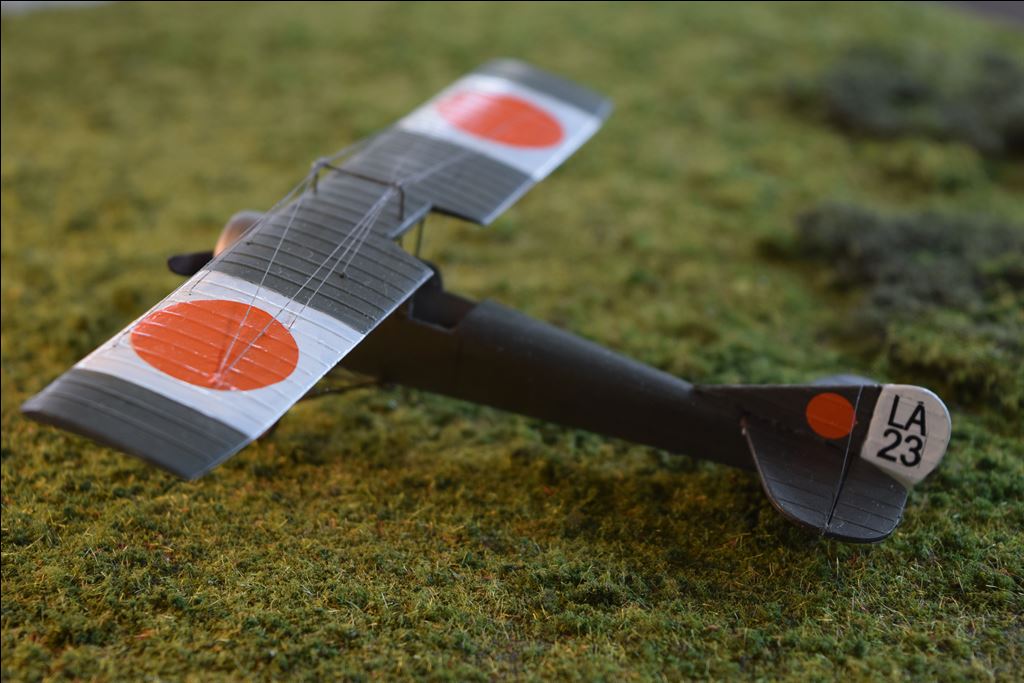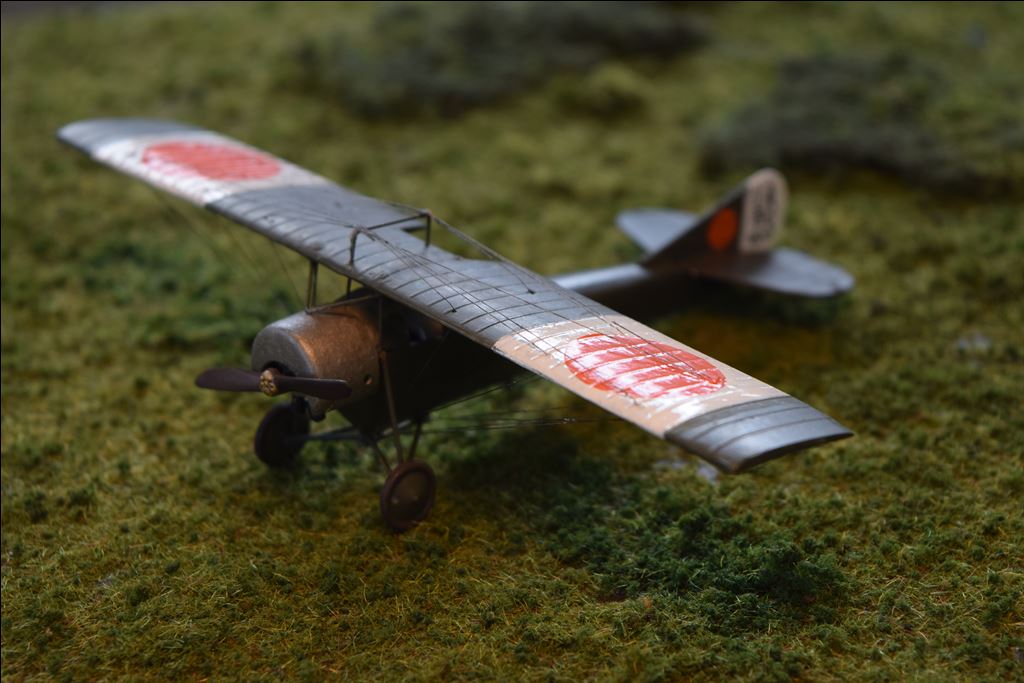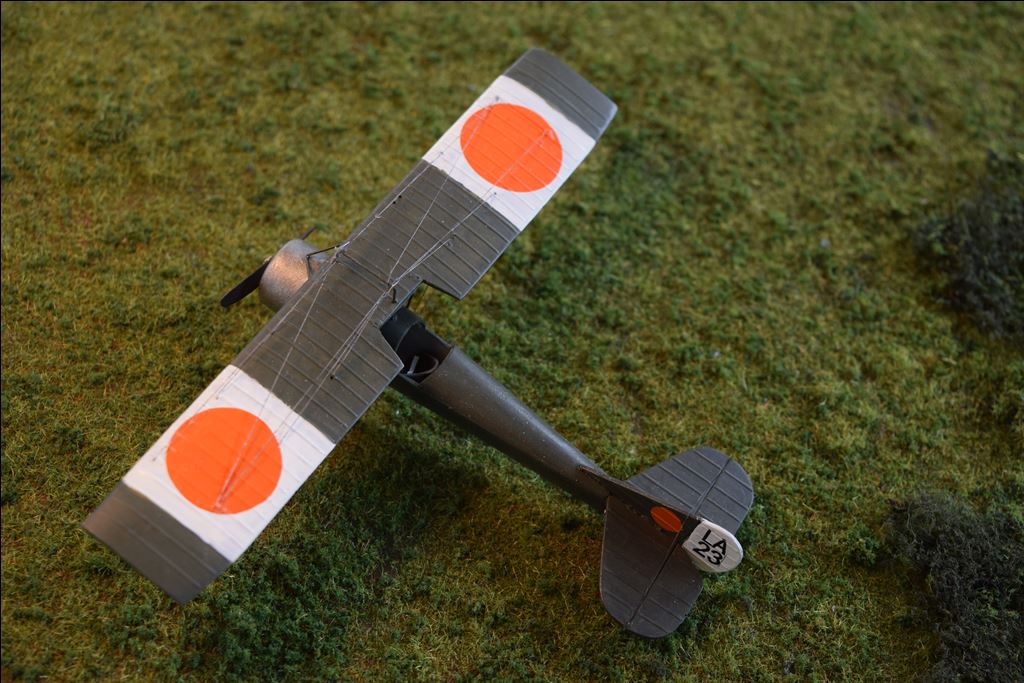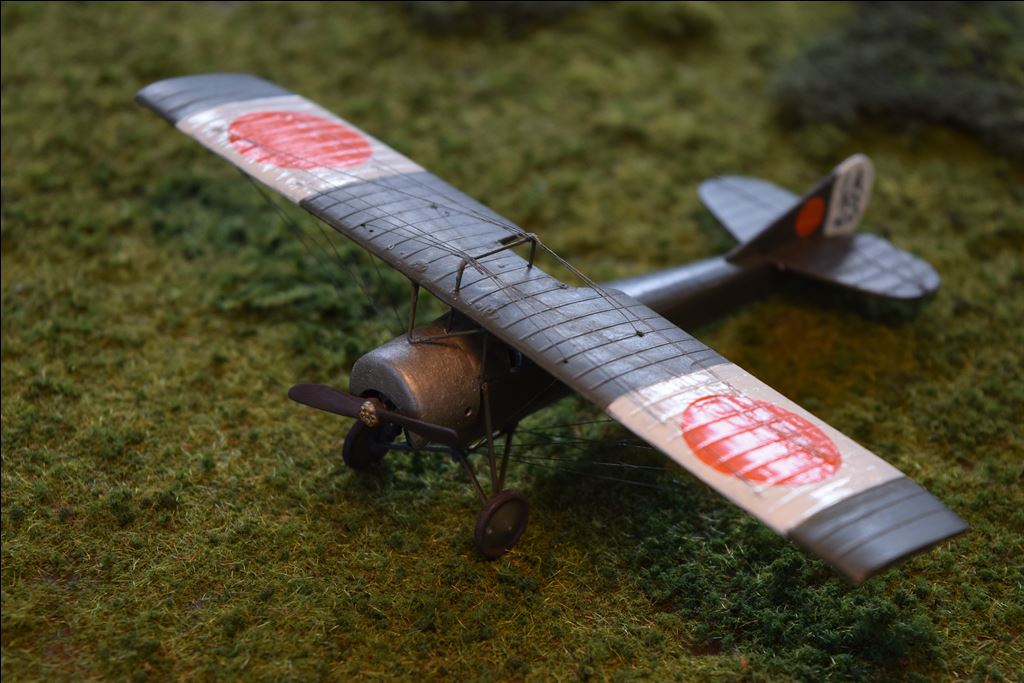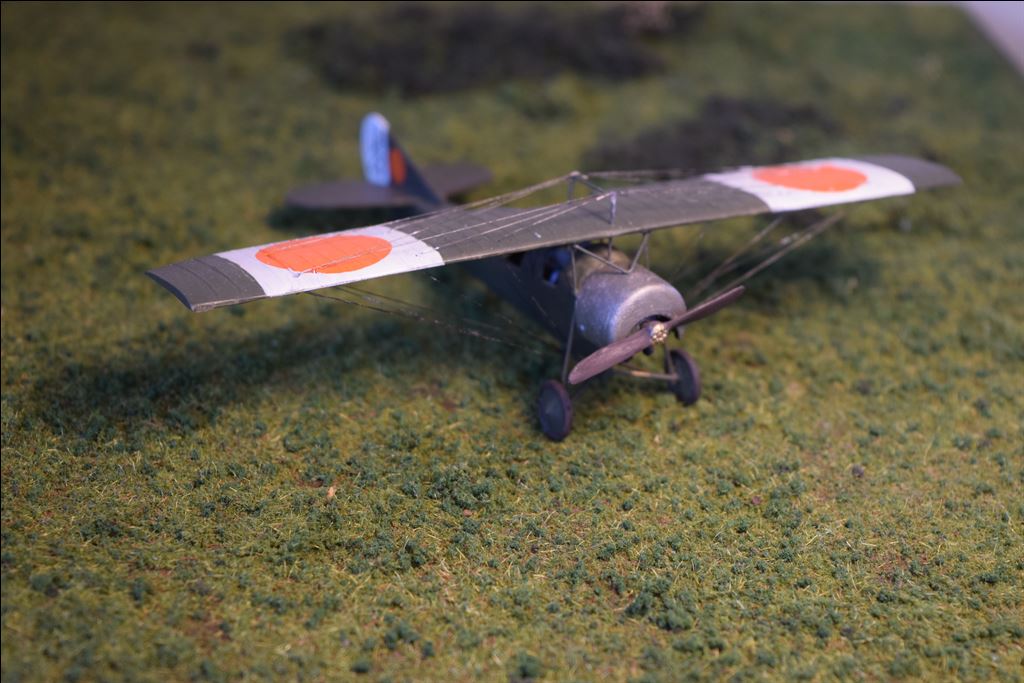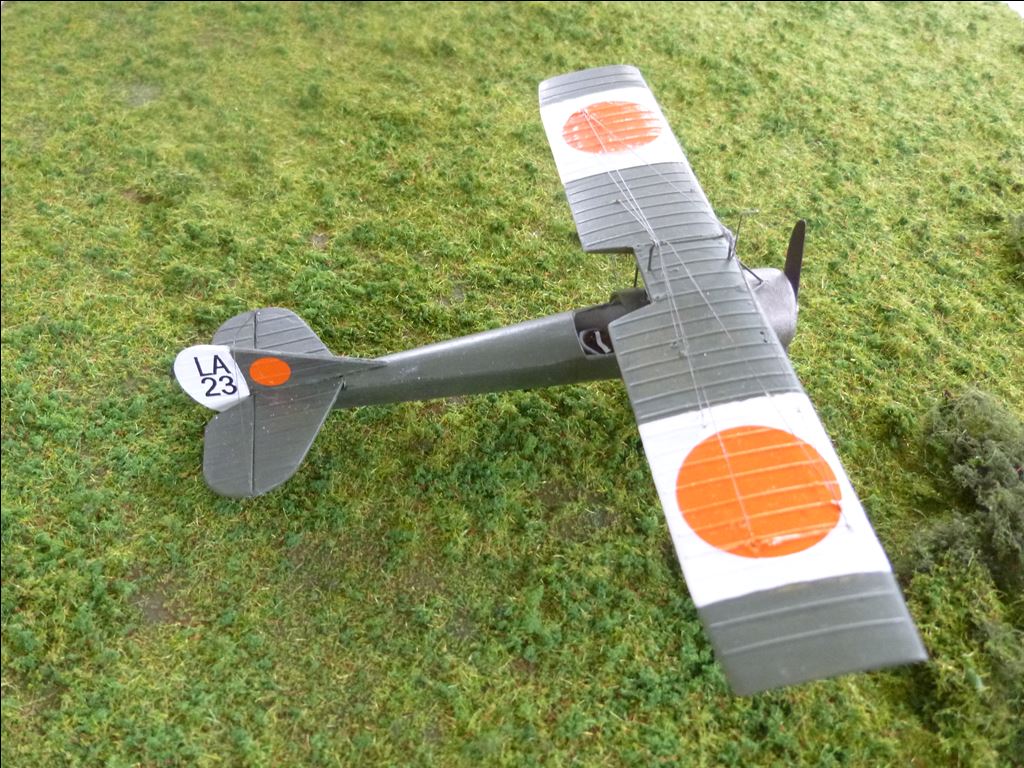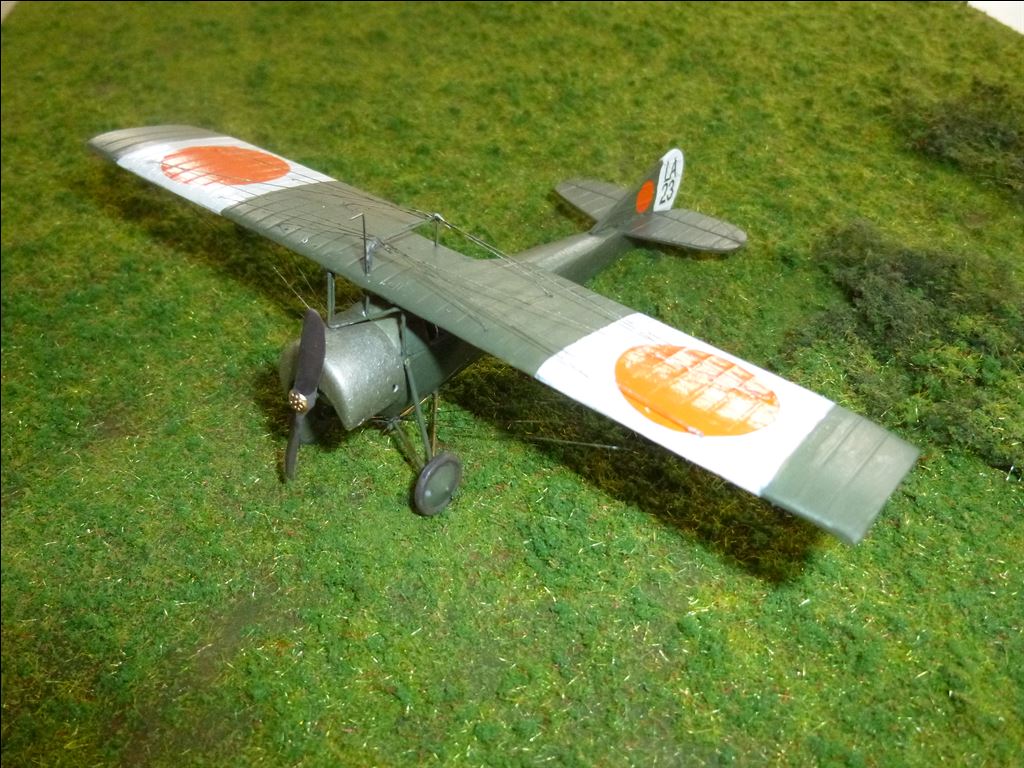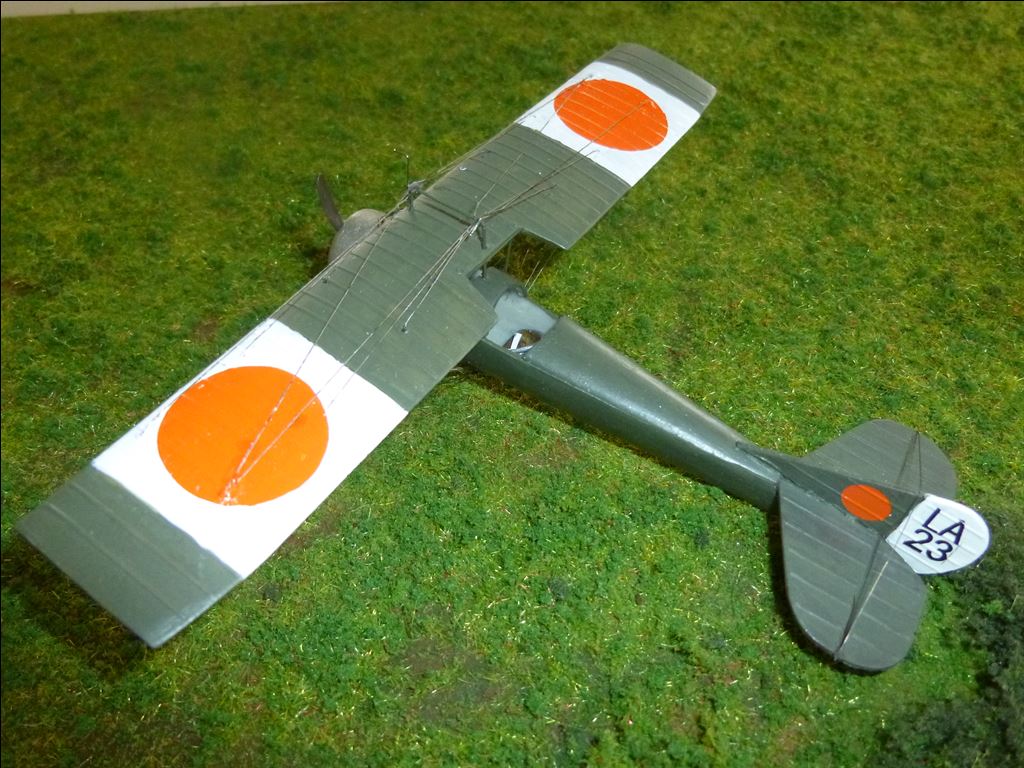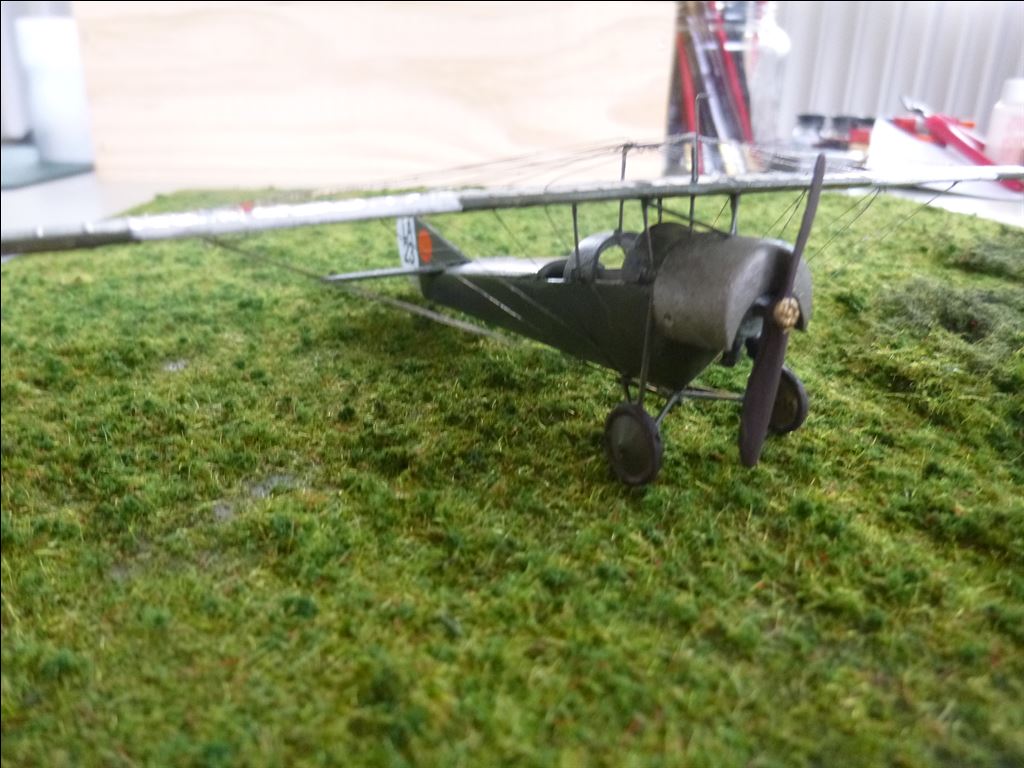- Details
- Hits: 9658
History
The S.E.5 (Scout Experimental 5), was designed for the new 150 hp Hispano-Suiza 8a V8 engine. The prototype made its maiden flight in November 1916. Due to errors in the design of the wing the first two prototypes crashed. The third prototype was modified and soon production started.
The aircraft proofed to be stable, manoeuvrable and strong. It was pone of the fastest aircraft of its time, though it appeared, in comparison to his contemporary, the Sopwith Camel, the lesser in a dog fight.
The S.E.5 had a fixed synchronized .303 inch Vickers machine gun on the nose plus a Lewis machine gun on the upper wing. Initially there were many problems with the synchronization system, so the Lewis gun was very appreciated by the pilots.
Versions
- S.E.5: The original version, 77 were built.
- S.E.5a: Equipped with the improved 200 hp Hispano-Suiza 8B and often a four blade propeller. 5265 examples were built at six plants.
Some were modified to two seat trainers. As the Hispano-Suiza 8B engine suffered technical problems and difficulties with delivery. Replacing the engine with a 200 hp Wolseley Viper, a licensed version of the Hispano-Suiza 8a solved the engine problems, so this engine was used as standard engine for the S.E.5A. - S.E.5b: a more streamlined version with wings of unequal span. Only one example built for research.
| Dimensions: | |||
| Length: | 6,38 m | Wingspan: | 8,12 m |
| Height: | 2,9 m | Wing area: | 22,67 m2 |
| Weights: | |||
| Empty weight: | 635 kg | Max. start weight: | 887 kg |
| Performances: | |||
| Max. speed: | 220 km/hr | Climbing speed: | - m/min |
| Cruising speed: | - km/hr | ||
| Range: | 483 km or 3 hours | Service ceiling: | 6705 m |
| Miscellaneous: | |||
| Engine type: | One Wolseley W4A Viper rated 200 hp | ||
| Crew: | One aviator | ||
| Armament: | One forward firing 7.7 mm Vickers machine gun plus one movable Lewis machine gun; Four bombs of 18 kg each. | ||
An aircraft of this type, serial B8485 of RFC no 60 squadron, flown by Lt. Owen Thamer, landed January 6, 1918 between Brielle and Oostvoorne. It was interned as SE214.
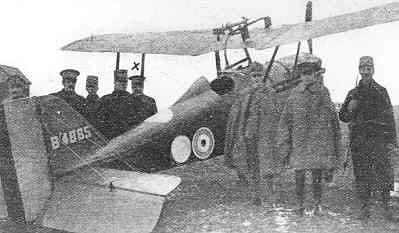
[Enclosed photo from BeeldBank NIMH. Click on photo for ordering information]
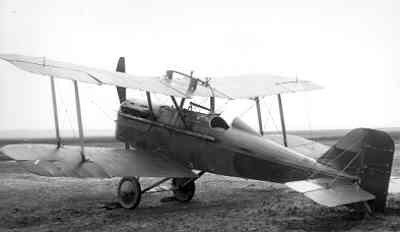
[Enclosed photo from BeeldBank NIMH. Click on photo for ordering information]
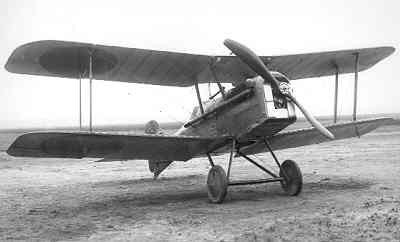
[Enclosed photo from BeeldBank NIMH. Click on photo for ordering information]

[Enclosed photo from BeeldBank NIMH. Click on photo for ordering information]
| Serial | RFC serial | Date in service | Date out of service | Notes |
|---|---|---|---|---|
| SE214 | B4885 | 06-01-1918 |
1/72nd Scale
Kits
- Encore
- Kit 72007: Se5A
- Pegasus
- Kit 2025: RAF SE5 (Early)
- Revell
- Kit 04108 / 04323 / 04061: Injection moulded kit of a SE.5A
- Roden
- Kit 045: RAF SE5a Wolseley Viper
- Kit 023: RAF SE5a Hispano Suisa
Modelling add-on
- Aeroclub
- Kit E421: Beardmore (RAF SE5a)
- Part Etchings
- Kit S72-206: Detailset RAF Se5a (Roden)
Decals
- Blue Rider
- Set BR212: Decalset voor verschillende Nederlandse vliegtuigen zoals een SE.5A LA49
1/48th Scale
Kits
- Blue Max
- Kit 112: RAF SE5a
- SMER
- Kit 0804: RAF SE5a
- Roden
- Kit 419: RAF SE5a Hispano Suisa
- Kit 416: RAF SE5a
Modelling add-on
- Airwaves
- Kit 4849: Detailset RAF SE5a
- Master Casters
- Kit 48015: RAF SE5a Cockpit Coaming and Palmer Cord Aero Tyres (Roden)
- Kit 48016: RRAF SE5a radiator and propeller Type B (Roden)
- Kit 48014: RAF SE5a radiator and propeller (Roden)
- Part Etchings
- Kit S48134: Detailset RAF Se5a (Roden)
Decals
- --
- Set --: --
| Scheme | Colour name | FS-nummer | BS-nummer | Humbrol | XtraColor | Vallejo Model Color | Vallejo Model Air | |
|---|---|---|---|---|---|---|---|---|
| Standard#1 | Fuselage | PC10 | 108 | X144 | ||||
| Wings | Doped linen | 121 | X105 | 70.819 | 71.028 | |||
| Wooden and metal parts | Khaki varnish OP7 | 108 | X144 | |||||
Check www.paint4models.com for an extensive conversion table with lots of colour and paint systems.
Literature.
| Nederlandse Militaire Luchtvaart in Beeld. deel 1. | Hugo Hooftman | Pag. 29 | 1977 | Uitgever: Europese Bibliotheek, Zaltbommel |
| Vintage Warbird no 1 The Royal Flying Corps in worldwar One | Rimell, Raymond Laurence | Pag. 46 - 53 | 1987 | Uitgever: Arms and Armour Press, Poole, Dorset |
| KLu Vliegtuigen: De vliegtuigen van de Koninklijke Luchtmacht vanaf 1913 | Wim Schoenmaker & Thijs Postma | Pag. 23 | 1987 | Uitgeverij De Alk, Alkmaar |
| Aircraft Archive Aircraft of World War One; Volume 2. | Pag. 24 - 28 | 1989 | Uitgever: Argus Books, Hempsted | |
| Camouflage en Kentekens | J.Greuter e.a. | 1997 | Bonneville – Bergen (NH) | |
| Air Enthusiast no.80 The Historical Aviation Journal: Unexpected Windfalls | Bart van der Klaauw | Pag. 54 - 59 | 1999 | Uitgever: Key Publishing, Stamford |
Websites.
--
- Details
- Hits: 10676
History
The B.E.2, designed by Geoffrey de Havilland, was in fact identical to the BE.1 and just differed in the engine, 60 hp air cooled Renault V-8. Later a more powerful 70 hp Renault was installed. The Renault engine proofed to be more reliable than the water cooled Wolseley.
Other prototypes were the B.E.5 and B.E.6, which differed just in the installed engine. These aircraft were later equipped with the Renault engine and designated BE2.
The first version, BE2a was virtually identical to prototypes and also equipped with the Renault engine.
The Be2b differed just in a improved protection of the crew. At the beginning of the war three squadrons with BE2s were the first to be sent to France.
Just before the war broke out, the first BE.2C entered service and this type soon replaced the earlier versions of the squadrons in France. It was a more stable plane necessary for its task, reconnaissance.
It differed in the new wing, tail section, ailerons. Later the tail was enlarged. Later all production aircraft were equipped with a development of the Renault engine, a RAF 1A engine; the undercarriage was initially equipped with two skates, later it was replaced with a V-shaped construction.
The B.E.2d was a trainer with double steering en enlarged and revised fuel system.
The B.E.2e, released 1916, had new designed wings. Many BE2cs and BE.2ds on the production-lines were equipped with this new wing and received the designation B.E.2f and B.E.2g respectively.
In the end over 3500 examples were built.
Versions.
- B.E.1: Prototype, with water cooled Wolseley engine.
- B.E.5: Prototype with a 60 hp ENV engine;
- B.E.6: Prototype.
- B.E.2a: First production version; Small number built in 1912;
- B.E.2b: Differed from in higher sides of cockpits. Late examples had ailerons, revised undercarriage en engine cooling;
- B.E.2c: Revised and improved version;
- B.E.2d: Version with double steering and larger fuel tank;
- B.E.2e: Definite version with new designed wings;
- B.E.2f: B.E.2c with wings of B.E.2e;
- B.E.2g: B.E.2d with wings of B.E.2e.
| Dimensions: | |||
| Length: | 8,3 m | Wingspan: | 11,2 m |
| Height: | 3,5 m | Wing area: | - m2 |
| Weights: | |||
| Empty weight: | 621 kg | Max. start weight: | 972 kg |
| Performances: | |||
| Max. speed: | 145 km/hr | Climbing speed: | - m/min |
| Cruising speed: | - km/hr | ||
| Range: | 4 hours | Service ceiling: | 3050 m |
| Miscellaneous: | |||
| Engine type: | One Royal Aircraft Factory 1A rated 90 hp | ||
| Crew: | Two men: one aviator plus one observer/air gunner | ||
| Armament: | One moveable.303 inch (=7.7 mm) Lewis machine gun for the observer; 100 kg bombs | ||
The first BE.2C, RFC serial 1754, landed March 10, 1915 near Biervliet. For unknown reasons (possible due to a long period of repair and overhaul ??) is received its serial after the crash of the second BE.2C.
The second BE.2C, serial 1677, landed June 5, 1915 near Axel and was interned as LA24. It crashed on May 24, 1917.
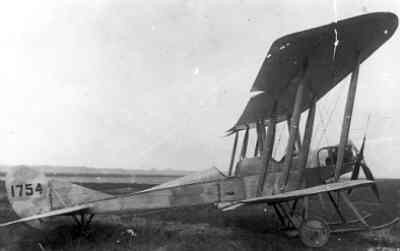
[Enclosed photo from BeeldBank NIMH. Click on photo for ordering information]
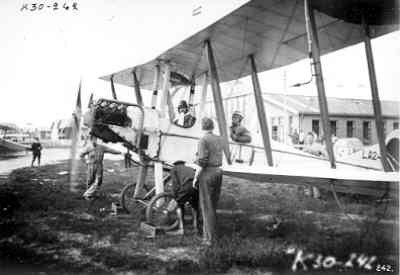
[Enclosed photo from BeeldBank NIMH. Click on photo for ordering information]

[Enclosed photo from BeeldBank NIMH. Click on photo for ordering information]
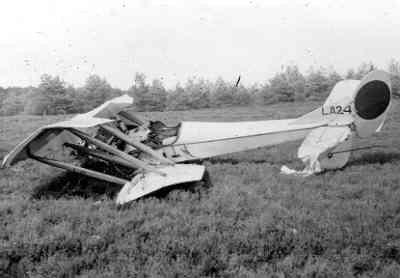
[Enclosed photo from BeeldBank NIMH. Click on photo for ordering information]
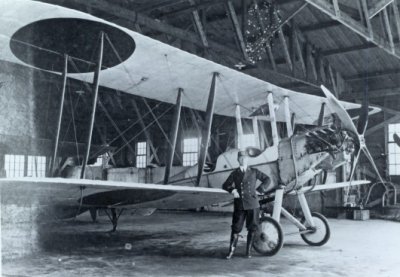
[Enclosed photo from BeeldBank NIMH. Click on photo for ordering information]
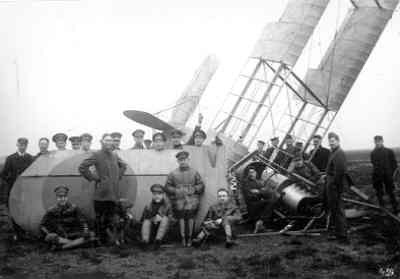
[Enclosed photo from BeeldBank NIMH. Click on photo for ordering information]
| Serial | RFC serial | Date in service | Date out of service | Notes |
|---|---|---|---|---|
| LA24 | 1677 | 05-06-1915 | ||
| LA24 | 1754 | 10-03-1915 | 24-05-1917 |
1/72nd Scale
Kits
- CMR
- Kit CMR1021: A resin kit for a BE.2C Late
- Kit CMR1020: A resin kit for a BE.2C early
- Formaplane
- Kit C19: a vacu formed kit
- HR Models
- Kit XX: A resin kit for a RAF Be2c Night Fighter
Modelling add-on
- Aeroclub
- Set E027: RAF 1a Cylinders and Exhaust (RAF Be2c)
- Set P040: WW1 RAF 4A type 4 Bld Wood (Be2-12)
Decals
- --
- Set --: --
1/48th Scale
Kits
- Aeroclub
- Set 444: RAF Be.2C
- Falcon
- Set 444: a vacu formed kit of a RAF Be.2C
- Roden
- Set 426: RAF BE2c Multi purpose two seat Aircraft
Modelling add-on
- --
- Set --: --
Decals
- --
- Set --: --.
| Scheme | Colour name | FS-number | BS-number | Humbrol | XtraColor | Vallejo Model Color | Vallejo Model Air | |
|---|---|---|---|---|---|---|---|---|
| Standard #1 | Overall | Varnish Fieldgreen DS3 | 117 | x116 | ||||
| Varnish FieldBrown DS9 | 186 | 70.983 | 71.035 | |||||
Check www.paint4models.com for an extensive conversion table with lots of colour and paint systems.
Literature.
| Nederlandse Militaire Luchtvaart in Beeld. deel 1. | Hugo Hooftman | Pag. 19 | 1977 | Uitgever: Europese Bibliotheek, Zaltbommel |
| KLu Vliegtuigen: De vliegtuigen van de Koninklijke Luchtmacht vanaf 1913 | Wim Schoenmaker & Thijs Postma | Pag. 22 | 1987 | Uitgeverij De Alk, Alkmaar |
| Vintage Warbird no 1 The Royal Flying Corps in worldwar One | Rimell, Raymond Laurence | Pag. 30 - 39 | 1987 | Uitgever: Arms and Armour Press, Poole, Dorset |
| Aircraft Archive Aircraft of World War One; Volume 2. | Pag. 16 - 19 | 1989 | Uitgever: Argus Books, Hempsted | |
| Camouflage en Kentekens | J.Greuter e.a. | 1997 | Bonneville – Bergen (NH) | |
| Air Enthusiast no.80 The Historical Aviation Journal: Unexpected Windfalls | Bart van der Klaauw | Pag. 54 - 59 | 1999 | Uitgever: Key Publishing, Stamford |
Websites.
--
- Details
- Hits: 11977
History
The Rumpler 6B-1 was originally a modified land plane and based upon the two seat Rumpler C.I
The modifications involved the wings position, an enlarged rudder and deletion of the seat of the observer.
During production an other modification was applied, the area of the horizontal tail surfaces was reduced.
The armament was one fixed forward firing Spandau LMG 08/15 fitted on the port side of the engine.
Versions
- Rumpler 6B-1: the original version, 39 examples built.
- Rumpler 6B-2: a version based on the larger Rumpler C.IV. Disadvantage was the lower performance. 49 examples were built.
| Dimensions: | |||
| Length: | 9,58 m | Wingspan: | 12,23 m |
| Height: | 3,63 m | Wing area: | 35,7 m2 |
| Weights: | |||
| Empty weight: | 790 kg | Max. start weight: | 1140 kg |
| Performances: | |||
| Max. speed: | 130 km/hr | Climbing speed: | 25 min to 3000 m |
| Cruising speed: | - km/hr | ||
| Range: | 4 hours | Service ceiling: | - m |
| Miscellaneous: | |||
| Engine type: | One Mercedes D-III rated 160 hp | ||
| Crew: | One aviator | ||
| Armament: | One fixed forward firing 7,92 mm Spandau MG 08/15 machine gun | ||
A Rumpler 6B.1 with German serial 1040, made an emergency landing on May 29, 1917 near West-Capelle. It was interned with serial U-1. In July 1918 it was sent to Dutch East-Indies, where it arrived on November 16, 1918.
It made its first flight in April 1919. Later it was modified to a two seat aircraft, but it crashed during a test flight in October 1919 and was written off.
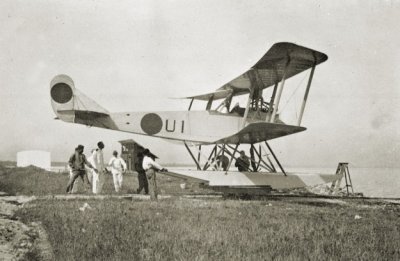
[Enclosed photo from BeeldBank NIMH. Click on photo for ordering information]
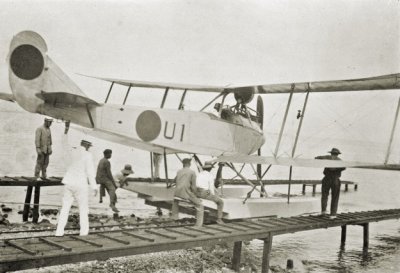
[Enclosed photo from BeeldBank NIMH. Click on photo for ordering information]
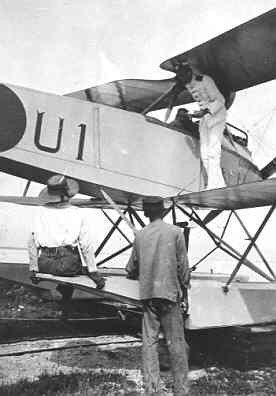
[Enclosed photo from BeeldBank NIMH. Click on photo for ordering information]
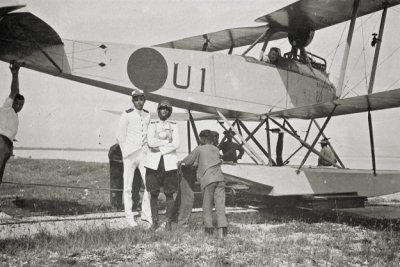
[Enclosed photo from BeeldBank NIMH. Click on photo for ordering information]
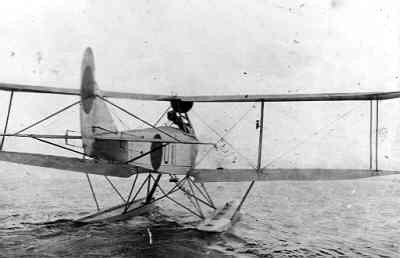
[Enclosed photo from BeeldBank NIMH. Click on photo for ordering information]
| Serial | German Serial | Date in service | Date out of service | Notes |
|---|---|---|---|---|
| U-1 | 1040 | 29-05-1917 | 10-1919 | Written off |
1/72nd Scale
Kits
- Formaplane
- Kit D18: A vacu formed kit.
Modelling add-on
- Aeroclub
- Set E074: An Benz 200 HP engine for LVG and Rumpler
- Set P050: German Wooden Prop + Spinner (Rumpler CIV, 6B)
Decals
- --
- Kit --: --.
1/48th Scale
Kits
- --
- Kit --: --.
Modelling add-on
- --
- Set --: --
Decals
- --
- Set --: --.
| Scheme | Colour name | FS-number | BS-number | Humbrol | XtraColor | Vallejo Model Color | Vallejo Model Air | Hataka | |
|---|---|---|---|---|---|---|---|---|---|
| Standard #1 | Overall | Light grey | ~6440 ??; | 129 | X137 | 70.986 | 71.121 | ~048 | |
| Upper surfaces wings and engine cowling | Dark grey | ~6118? | 112 / 156 ? | 70.868 | 71.053 | ~031 | |||
Check www.paint4models.com for an extensive conversion table with lots of colour and paint systems.
Literature.
| Nederlandse Militaire Luchtvaart in beeld, deel 1 | H. Hooftman | Pag. | 1977 | Uitgave: Europese Bibliotheek, Zaltbommel |
| Nederlandse Marinevliegtuigen | Thijs Postma & Nico Geldhof | Pag. 14 | 1978 | Uitgever: Omniboek, 's Gravenhage |
| 40 Jaar luchtvaart in Indië | Gerard Casius & Thijs Postma | Pag. 13 | 1986 | Uitgeverij De Alk, Alkmaar |
| 70 Jaar Marine-LuchtvaartDienst | Nico Geldhof | Pag. 18 | 1987 | Uitgeverij Eisma b.v., Leeuwarden |
| Vintage Aviation fotofax German Naval Air Service | Imrie, Alex | Pag. | 1989 | Uitgever: Arms and Armour Press, Poole, Dorset |
| Camouflage en Kentekens | J.Greuter e.a. | 1997 | Bonneville – Bergen (NH) | |
| Air Enthusiast no.80 The Historical Aviation Journal: Unexpected Windfalls | Bart van der Klaauw | Pag. 54 - 59 | 1999 | Uitgever: Key Publishing, Stamford |
| 85 Jaar Marineluchtvaartdienst in beeld Van Farman tot NH 90 Helikopter | Peter Korbee | Pag. 17 | 2002 | Uitgever: Korbee MLD Promotie, Valkenburg |
Websites.
--
- Details
- Hits: 11580
History
The Rumpler C.I was one of the first reconnaissance biplane entering German service in 1915. It was used until the end of the war.
Initially the aircraft was armed with one Parabellum machine gun for the gunner/observer, but later a fixed, synchronized Spandau machine gun was added. The Rumpler C.I was also used as a light bomber and it could take a bomb load of about 100 kg.
A version was Rumpler C.Ia, equipped with a 180 hp Argus As.III engine replacing the 160 hp Mercedes D.III.
The Rumpler 6B-1 was a single seat float version.
A series of Rumplers was delivered as unarmed trainers with a 150 hp Benz Bz.III engine. These trainers were kept in service until the end of the war.
| Dimensions: | |||
| Length: | 7,85 m | Wingspan: | 12,15 m |
| Height: | 3,06 m | Wing area: | 35,7 m2 |
| Weights: | |||
| Empty weight: | 793 kg | Max. start weight: | 1300 kg |
| Performances: | |||
| Max. speed: | 150 km/u | Rate of climb: | - m/min |
| Range: | 4 hrs | Service ceiling: | 5050 m |
| Miscellaneous: | |||
| Engine type: | One Mercedes D.III rated 160 hp | ||
| Crew: | Two men: one aviator plus one observer/air gunner | ||
| Armament: | 100 kg bombs; One fixed, forward firing 7,9 mm Spandau LMG 08/15 machine gun | ||
| Dimensions: | |||
| Length: | 7,85 m | Wingspan: | 12,15 m |
| Height: | 3,06 m | Wing area: | 35,7 m2 |
| Weights: | |||
| Empty weight: | 815 kg | Max. start weight: | - kg |
| Performances: | |||
| Max. speed: | - km/u | Rate of climb: | - m/min |
| Range: | 600 km | Service ceiling: | 5200 m |
| Miscellaneous: | |||
| Engine type: | One Argus As III rated 180 hp | ||
| Crew: | Two men: one aviator plus one observer/air gunner | ||
| Armament: | 100 kg bombs; One fixed, forward firing 7,9 mm Spandau LMG 08/15 machine gun | ||
The first Rumpler C.I, German serial 2560/17 made an emergency landing on December 1, 1917 near Geldrop and was interned as R410. On February 5, 1918 the aircraft was destroyed in an accident and written off.
The second Rumpler C.I, serial 8364/17 landed October 29, 1918 near Nederweert and was interned as R480.
The third, a Rumpler C.Ia, 968/17 laded in good condition on August 23, 1917 near Elburg. The German markings were painted over with Dutch markings and Van Heyst flew the aircraft to Soesterberg, where it received serial LA49 . In 1918 the serial was changed in R409.

[Enclosed photo from BeeldBank NIMH. Click on photo for ordering information]
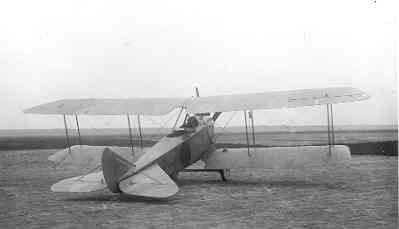
[Enclosed photo from BeeldBank NIMH. Click on photo for ordering information]

[Enclosed photo from BeeldBank NIMH. Click on photo for ordering information]

[Enclosed photo from BeeldBank NIMH. Click on photo for ordering information]
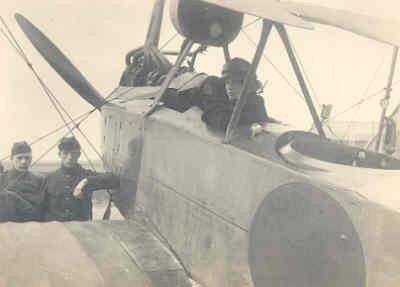
[Enclosed photo from BeeldBank NIMH. Click on photo for ordering information]

[Enclosed photo from BeeldBank NIMH. Click on photo for ordering information]
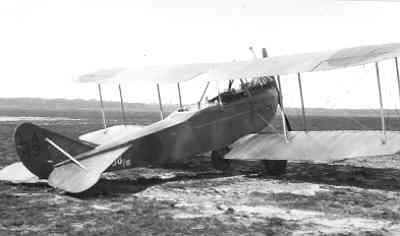
[Enclosed photo from BeeldBank NIMH. Click on photo for ordering information]

[Enclosed photo from BeeldBank NIMH. Click on photo for ordering information]
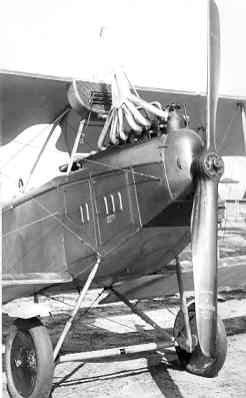
[Enclosed photo from BeeldBank NIMH. Click on photo for ordering information]

[Enclosed photo from BeeldBank NIMH. Click on photo for ordering information]
| Serial | Werknr. | (German) Bestellnr. | Date in service | Date out of service | Notes |
|---|---|---|---|---|---|
| R410 | 2560/17 | 01-12-1917 | 05-02-1918 | ||
| R480 | 8364/17 | 29-10-1918 |
| Serial | 2nd Serial | Werknr. | (German) Bestellnr. | Date in service | Date out of service | Notes |
|---|---|---|---|---|---|---|
| LA49 | R409 | 968/17 | 23-08-1917 | 1920 |
1/72nd Scale
Kits
- Lüdemann
- Kit Xx: Ludemann released a resin kit of this type.
- Joystick
- JOY6: a vacu formed model
- Chorozy
- MKB006: a resin kit
- MKA072: Rumpler C1
Modelling add-on
- Aeroclub
- Set E074: An Benz 200 HP engine for LVG and Rumpler
- Set P050: German Wooden Prop + Spinner (Rumpler CIV, 6B)
- Miniworld
- Set A72-16: Parabellum LMG.14
Decals
- Blue Rider
- Set BR212: Decalset with decals for several Dutch aircraft such as Rumpler LA49
1/48th Scale
Kits
- Planet
- Set 145: Rumpler C1
Modelling add-on
- --
- Set --: --
Decals
- --
- Set --: --
| Scheme | Colour name | FS-number | BS-number | Humbrol | XtraColor | Vallejo Model Color | Vallejo Model Air | |
|---|---|---|---|---|---|---|---|---|
Check www.paint4models.com for an extensive conversion table with lots of colour and paint systems.
Literature.
| Nederlandse Militaire Luchtvaart in beeld, deel 1 | H. Hooftman | Pag. 49 | 1977 | Uitgave: Europese Bibliotheek, Zaltbommel |
| KLu Vliegtuigen: De vliegtuigen van de Koninklijke Luchtmacht vanaf 1913 | Wim Schoenmaker & Thijs Postma | Pag. 17 | 1987 | Uitgeverij De Alk, Alkmaar |
| Vintage Aviation fotofax German Bombers of World War One | Imrie, Alex | Pag. 20 | 1990 | Uitgever: Arms and Armour Press, Poole, Dorset |
| Camouflage en Kentekens | J.Greuter e.a. | 1997 | Bonneville – Bergen (NH) | |
| Air Enthusiast no.80 The Historical Aviation Journal: Unexpected Windfalls | Bart van der Klaauw | Pag. 54 - 59 | 1999 | Uitgever: Key Publishing, Stamford |
Websites.
--
- Details
- Hits: 11803
History
The Esnault-Pelterie REP.1 and its successor the REP.2 were originally experimental aircraft, developed by French aviation pioneer Robert Esnault-Pelterie. The REP-1 had an unusual undercarriage consisting of on main wheel, a small tail wheel and two smaller wheels mounted to the wing-tips. A novelty was the steering by a stick.
The REP.2 differed from the REP.1, initial the same construction, but soon a more conventional construction. The fuselage was a steel tube frame covered with linen.
Test flights with the REP.1 were made in September 1907 and test flights with the REP.2 were made in June 1908 and resulted in a height an distance record for monoplanes.
| Dimensions: | |||
| Length: | 6,85 m | Wingspan: | 9,6 m |
| Height: | 2,5 m | Wing area: | 15,75 m2 |
| Weights: | |||
| Empty weight: | - kg | Max. start weight: | 420 kg |
| Performances: | |||
| Max. speed: | 80 km/hr | Climbing speed: | - m/min |
| Cruising speed: | - km/hr | ||
| Range: | - km | Service ceiling: | - m |
| Miscellaneous: | |||
| Engine type: | - | ||
| Crew: | One aviator | ||
| Armament: | - | ||
This reconnaissance aircraft from the RNAS with serial 8460 and flown by Fl.Lt. J.E.D. Boyd, made an emergency landing on October 3, 1915 near Zuid-Lande. It entered Dutch service on November 3, 1915 as LA23.
Later the aircraft was used for taxi training (wings removed or stripped) as REP3.

This aircraft of RNAS landed on October 3, 1815 near Zuidzande.
[Enclosed photo from BeeldBank NIMH. Click on photo for ordering information]
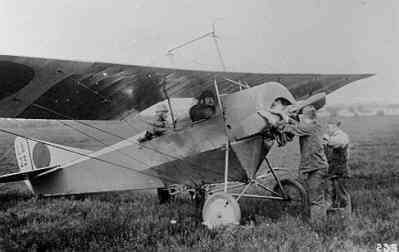
[Enclosed photo from BeeldBank NIMH. Click on photo for ordering information]

[Enclosed photo from BeeldBank NIMH. Click on photo for ordering information]
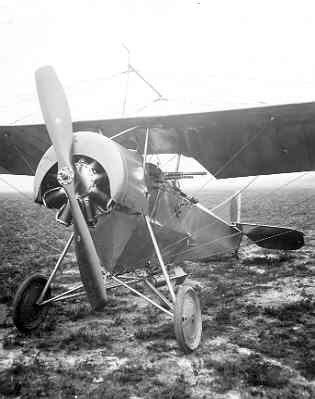
[Enclosed photo from BeeldBank NIMH. Click on photo for ordering information]
| Serial | 2nd Serial | Constr. nr. | Date in service | Date out of service | Notes |
|---|---|---|---|---|---|
| LA23 | REP3 | 8460 | 03-10-1915 | 1919 ? |
1/72nd Scale
Kits
- Omega
- Kit 72255: A resin kit of a REP parasol, with markings for a RNAS and a Dutch interned REP
Modelling add-on
- --
- Set --: --
Decals
- --
- Set --: --
1/48th Scale
Kits
- --
- Kit --: --.
Modelling add-on
- --
- Set --: --.
Decals
- --
- Set --: --.
| Scheme | Colour name | FS-number | BS-number | Humbrol | XtraColor | Vallejo Model Color | Vallejo Model Air | |
|---|---|---|---|---|---|---|---|---|
Check www.paint4models.com for an extensive conversion table with lots of colour and paint systems.
Literature.
| Nederlandse Militaire Luchtvaart in Beeld. deel 1. | Hugo Hooftman | Pag. 18 | 1977 | Uitgever: Europese Bibliotheek, Zaltbommel |
| KLu Vliegtuigen: De vliegtuigen van de Koninklijke Luchtmacht vanaf 1913 | Wim Schoenmaker & Thijs Postma | Pag. 18 | 1987 | Uitgeverij De Alk, Alkmaar |
| Air Enthusiast no.80 The Historical Aviation Journal: Unexpected Windfalls | Bart van der Klaauw | Pag. 54 - 59 | 1999 | Uitgever: Key Publishing, Stamford |
Websites.
--
